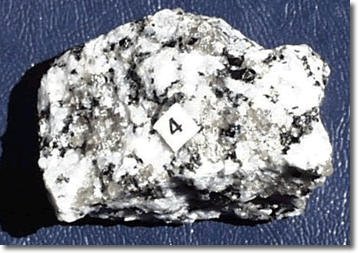Weathering

Physical weathering is one way that rocks are broken down. The continued heating and cooling of rocks weakens the structure and finally leads to small pieces breaking off. This process is called thermal expansion. Find out more... 
Design an experiment to investigate the effect of heating and cooling on a rock. First decide your dependent and independent variables and the variables that you will need to control. In this example think about whether you need a control. More... Valid and reliable experiments In a scientific investigation you must ask yourself if the experiment is valid and reliable. More... Variables The variables in an investigation are categorised as the independent variable, the dependent variable and the controlled variables. Ideally only one variable should change in an investigation. More... |

Granite  The rock cycle refers to the process of weathering, erosion and deposition of rock material. The surface of the Earth is not static. Rocks are constantly worn away and in other areas new rock emerges from volcanoes. In this investigation you will model mechanical weathering. |

The following activities are suitable for use on an interactive whiteboard (IWB). You will need Activstudio 3 to open these flipcharts. If you do not have an IWB then use the Flash alternative. Task 1 Effect of heating and cooling on rock 

 The following print based resources may be useful. Continents on the move Set 1 (.pdf 4.2 MB) and Set 2 (.pdf 993 kB).  Here are some examples of geoscience websites. Animations of the rock cycle. |
